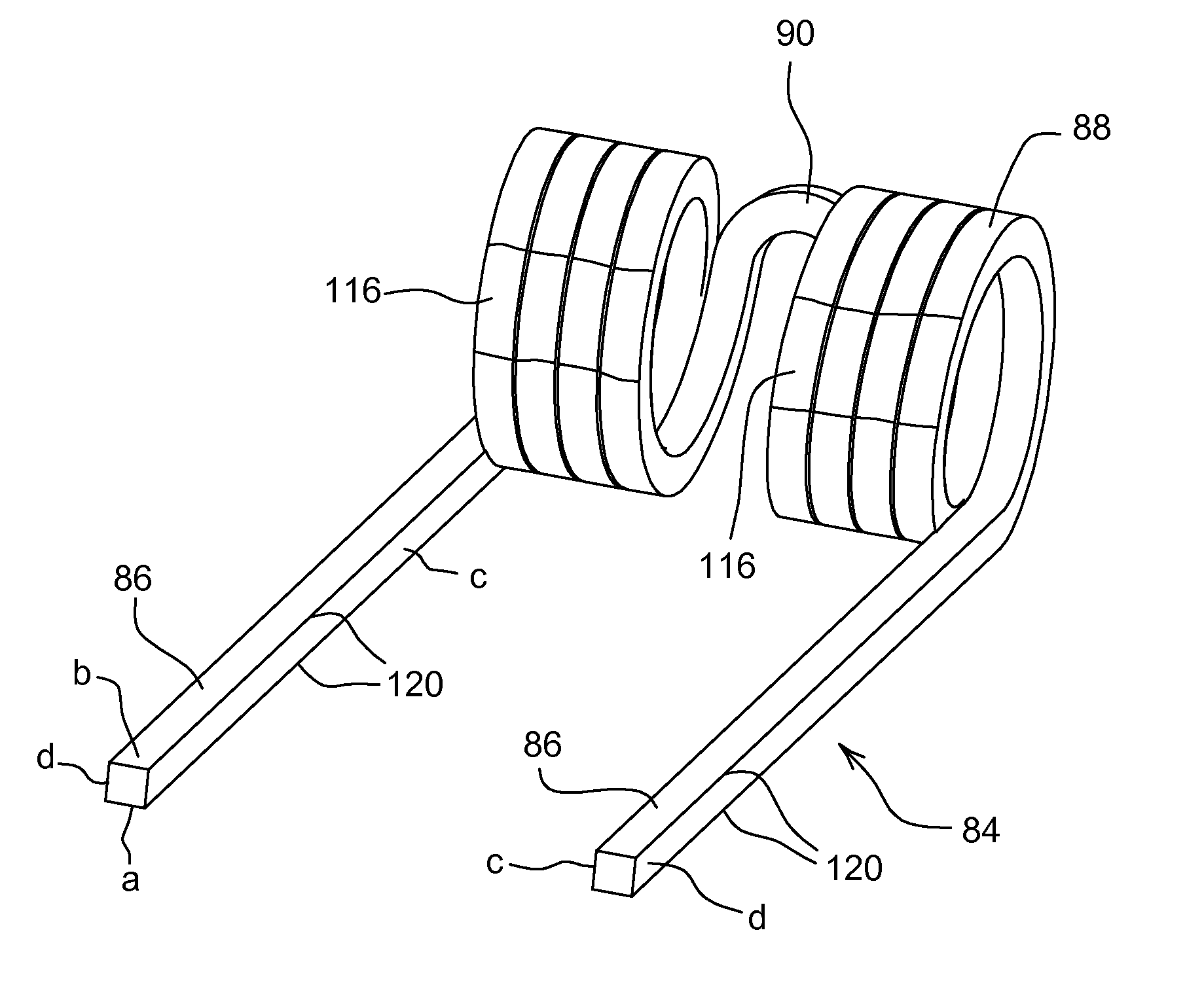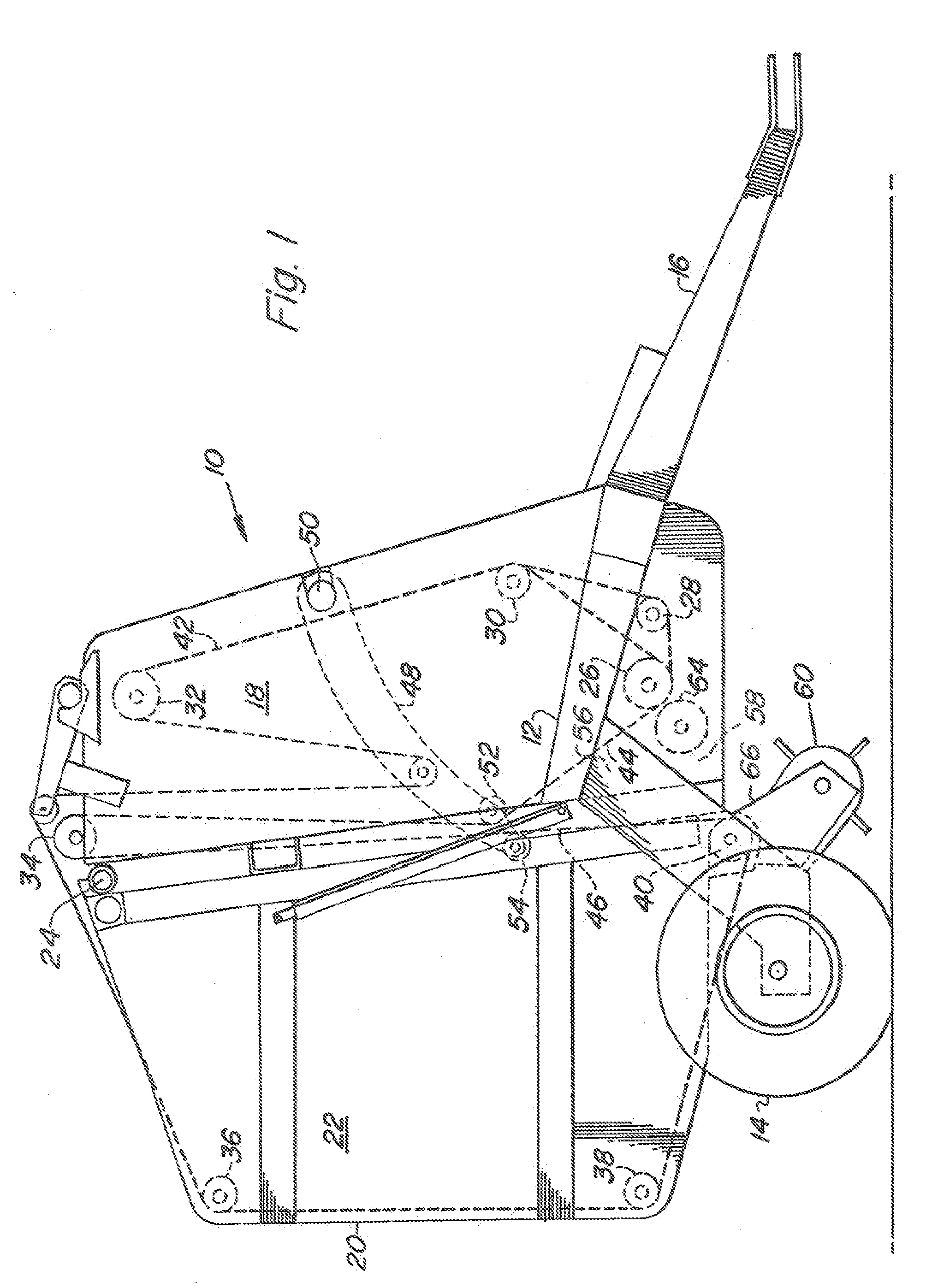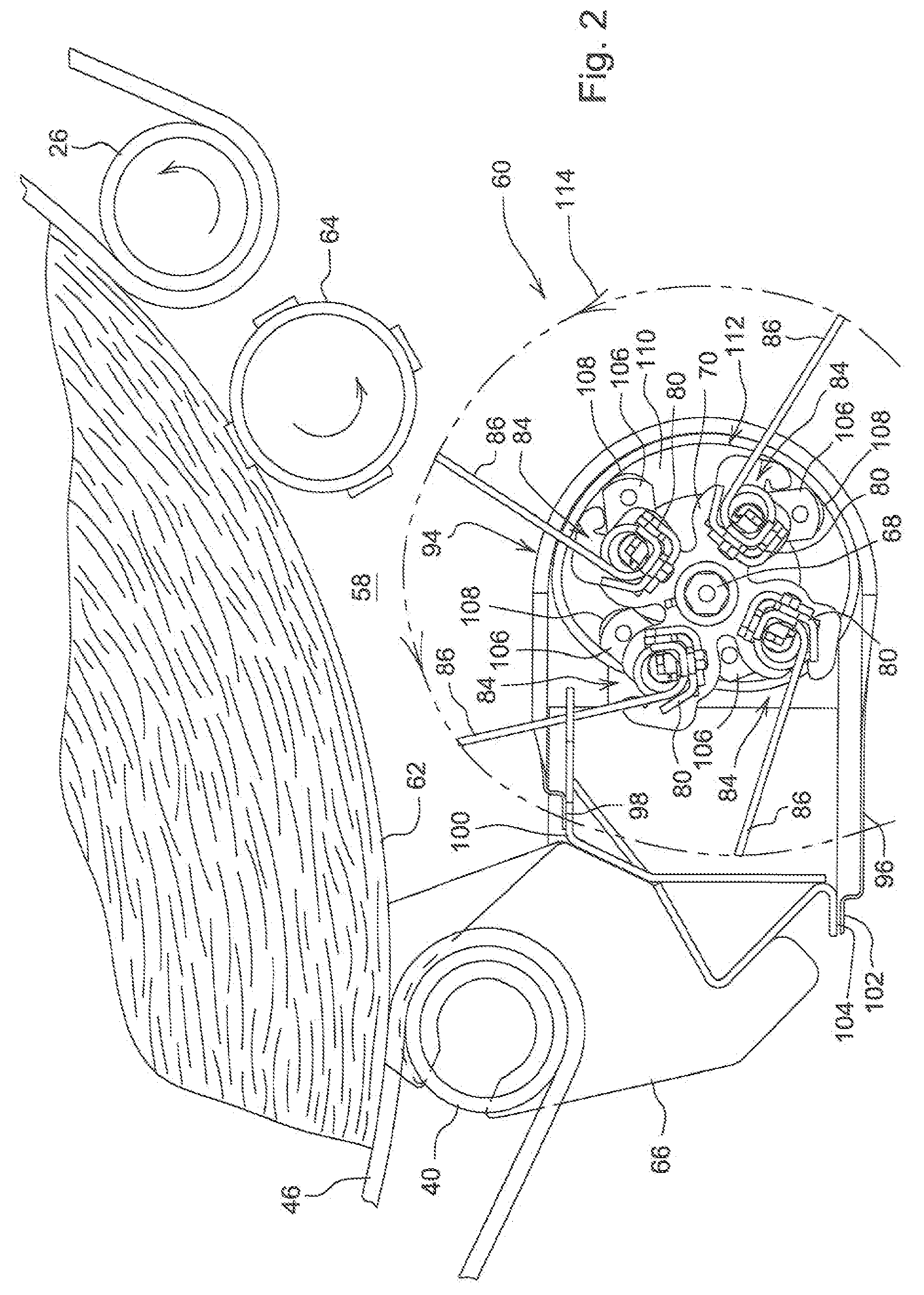Non-Circular Wire Crop Pick-Up Tooth
a crop pick-up tooth and non-circular wire technology, applied in the field of crop pick-up machinery, can solve the problems of undue stress on the tine coil, failure of yielding and fatigue, and relatively short load cycle, so as to improve dampening, reduce stress, and improve feeding.
- Summary
- Abstract
- Description
- Claims
- Application Information
AI Technical Summary
Benefits of technology
Problems solved by technology
Method used
Image
Examples
Embodiment Construction
[0014]Preliminarily, it is to be noted that various components are described as existing in pairs while only one of each pair is illustrated, with it to be understood that the unshown component is the same as, or a mirror image of, the illustrated component.
[0015]Referring now to FIG. 1, there is shown a baler 10 of the type for making large cylindrical bales and commonly called a large round baler. The baler 10 comprises a main frame 12 supported on a pair of ground wheels 14 and having a draft tongue 16 secured thereto and adapted for being connected to a towing vehicle, such as an agricultural tractor. A pair of transversely spaced vertical sidewalls 18 is joined to the frame 12, with the sidewalls 18 having respective upright rear edges. A bale discharge gate 20 including opposite side walls 22 is vertically pivotally attached, as at 24, to upper rear locations of the sidewalls 18. The sidewalls 22 have forward upright edges which abut against the rearward edges of the sidewalls...
PUM
 Login to View More
Login to View More Abstract
Description
Claims
Application Information
 Login to View More
Login to View More - R&D
- Intellectual Property
- Life Sciences
- Materials
- Tech Scout
- Unparalleled Data Quality
- Higher Quality Content
- 60% Fewer Hallucinations
Browse by: Latest US Patents, China's latest patents, Technical Efficacy Thesaurus, Application Domain, Technology Topic, Popular Technical Reports.
© 2025 PatSnap. All rights reserved.Legal|Privacy policy|Modern Slavery Act Transparency Statement|Sitemap|About US| Contact US: help@patsnap.com



